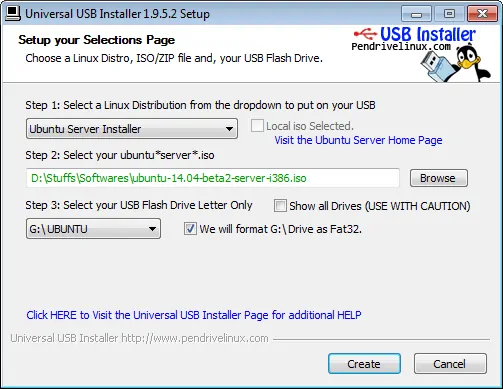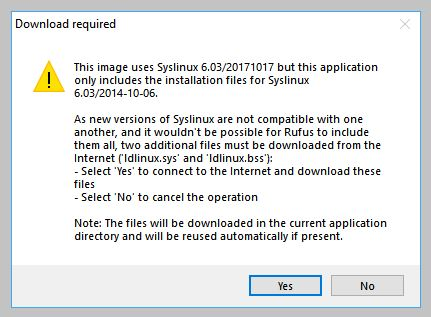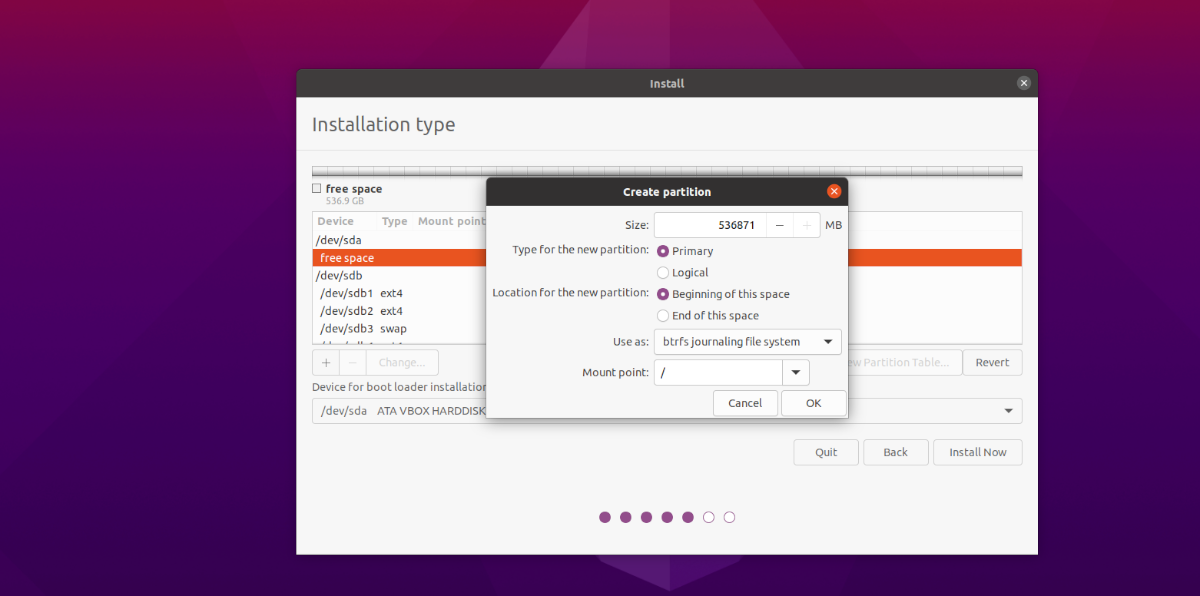

- #Install ubuntu from usb install#
- #Install ubuntu from usb iso#
- #Install ubuntu from usb plus#
- #Install ubuntu from usb windows 8#
But what if both options failed for some reason? If not, there is an option in BIOS/UEFI to change that. I’ve installed Google Chrome so that I can message with Hangouts, resulting in the 6.5 GB root being 74% full.Almost every modern computer has a dedicated menu to choose from which device the system should boot. Opening a terminal window (which couldn’t be done with “Try Ubuntu”) works. Ubuntu 14.04 now runs successfully from the (white) USB 2.0 flash drive. from the internal disk), the rewriting of the swap partition didn’t seem to have an impact. My understanding is that really shouldn’t make a difference, so it seems like a quirk with the installation program that a swap partition had to be created somewhere. It looks like whether I create a swap partition on the (white) USB key or not, the installation wants to reformat the swap partition on the fixed disk in the tower computer.

Partition #6 of SCSI9 (0,0,0) (sdc) as swap Partition #5 of SCSI9 (0,0,0) (sdc) as ext4 Partition #1 of SCSI9 (0,0,0) (sdc) as fat32 Partition #5 of SCSI1 (0,0,0) (sda) as swap The following partitions are going to be formatted: The partition tables of the following devices are changed: Otherwise, you will be able to make further changes manually. If you continue, the changes listed below will be written to the disks. When I select the “Install Now” button, I get a message: I was sure to set the Device for boot loader installation as sdc1 The partition sizes for the (white) 8GB USB key that I chose were roughtly 1 GB for the fat32 partition, labelled dos 6.5 GB for the ext4 partition labeled / and 0.5 GB for the swap partition. The target for installation is a (white) 8GB USB key.
#Install ubuntu from usb iso#
I had put the Ubuntu 14.04 iso onto a (red) 8GB USB key. This work is being done on a computer tower with Ubuntu 16.04 installed. I’m going to create the swap partition on the USB drive, because I’m uncomfortable with the message I get about reformatting the swap partition on the hard drive. In these instructions, you’ve written that creating the swap partition on USB drive is optional. Once the installation complete, restart your computer and boot with the ‘Ubuntu To Go’ USB drive and enjoy!
#Install ubuntu from usb install#
When everything’s done, click Install Now and confirm to format the partitions (Pay attention on which partitions to be formatted).Ĭlick continue and finish the wizard.
#Install ubuntu from usb plus#
In the partition table, scroll down and highlight the “free space” under the USB drive (/dev/sdc in the case) and click the plus sign to create below partitions one by one: Select the last option “Something else” and click Continue to bring up partition table.Ħ.

Click the desktop shortcut “Install Ubuntu” to bring up the Ubuntu installation wizard.įollow the wizard until it asks you to choose where to install Ubuntu. When done, close Gparted partition manager.ĥ. From the right-click context menu, un-mount partitions on the USB drive and then delete them.Ĭlick the green check mark button to apply changes, finally you have an unallocated flash drive, like: I have two USB flash drives plugged in the computer, the Hard Disk is /dev/sda, 4GB Live USB is /dev/sdb, and the 16GB USB drive is /dev/sdc.Ĥ. In the top-right drop-down box select the USB drive (16GB in my case), and you should see something like below: To disable “secure boot”, follow this screenshot tutorial.ģ. To disable “fast startup”, go to Control Panel > Hardware and Sound > Power Options > System Settings > Choose what the power buttons do and uncheck the Turn on fast startup box.
#Install ubuntu from usb windows 8#
IMPORTANT: For Windows 8 pre-installed machine, you have to disable “fast startup” and “secure boot” features. Plug in the bootable USB drive to your computer and boot into the Live Ubuntu system. If you need more hints, follow this screenshot tutorial to create bootable Ubuntu Live USBĢ.


 0 kommentar(er)
0 kommentar(er)
